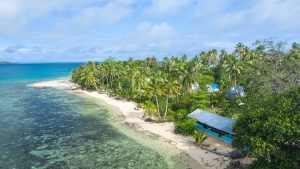From the postcard-perfect Coral Bay to the hidden beauty of Secret Cove, these spots promise stunning photos and unforgettable views.
GVI
Posted: August 29, 2024

Posted: November 27, 2019
So this is my first week volunteering at GVI Seychelles and so far it’s been a blast. Warm weather, great people, and amazing opportunities to work with turtles and sharks. They asked me to write a blog about the volunteering, anything I like. At home I am an architect so this volunteering is pretty far from my every day job. For the blog I decided to stay close to home and write about the housing situation.
The buildings now used as our campsite were built in 1829. They existed far before GVI set foot on the island and served the purpose of housing people affected by leprosy on the island. The buildings have since been completely refurbished, but until 1900 that was there home. This complex included a doctor house and even a prison. The buildings were abandoned for a while, but from 1935 the buildings were reused again. In 1965 all people affected by leprosy left the island for good. The buildings were left for nature to claim them. Today the buildings are safe for occupation. The latest research suggests that leprosy is contracted when someone whose immune system is compromised, or who is genetically predisposed, comes into regular close contact with someone who is currently affected by this bacterial infection. In addition, leprosy is a bacterial infection, which today can be cured with antibiotics, a medical technology people did not have access to in the past
In 2007 GVI decided to make Curieuse Island there home. And why make new buildings when there are already perfectly fine building on the island. Now a days the camp is using the female dorms of the people affected by leprosy. Two buildings are used as mixed dormitory with 8 beds per dorm. The staff has their own staff house. Then there are 3 more buildings used for the camp, a kitchen, a science room and a supply room. A big roof is connecting the science room building and the kitchen. The space in between is called the bommie which is used for meetings, breakfast, lunch, dinner and other gatherings. All the buildings are facing the sea, which gives it a nice light breeze. The sound of sea is always close.
On some of the walks when you do the beach cleaning you pass along the prisons. It’s very interesting to see how small the spaces are, now still half visible. Most of it is broken down and covered by trees. Also on the camps are a few building, almost ruins now covered by trees. I guess all the buildings in the camp were like that when GVI came here and made it their home. I can only image how much work it must have been to make the buildings liveable again. I must say they did a pretty good job at it. They have a fully functioning water system, good toilets and spacious showers. Off course maintaining the camp still needs work every day. But the staff and volunteers are one big family working together to keep everything running. It’s a great experience that I can recommend to everyone.

From the postcard-perfect Coral Bay to the hidden beauty of Secret Cove, these spots promise stunning photos and unforgettable views.
GVI
Posted: August 29, 2024